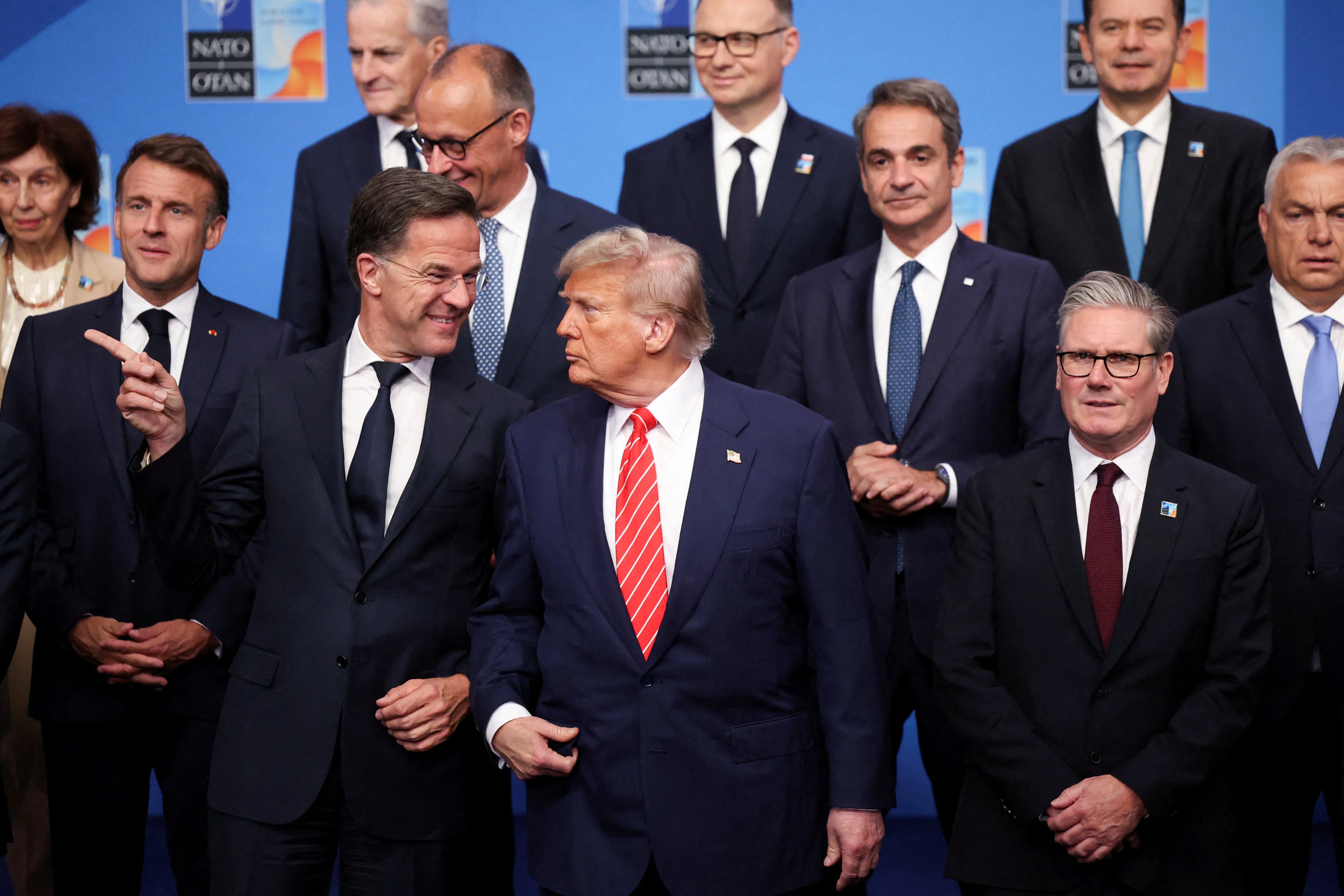By David Dodwell
The commitment by Nato’s 32 members to lift their defence spending to 5 per cent of their gross domestic product by 2035 has generated something between shock and awe and a feeling of being plunged into an Alice-in-Wonderland world.
Above all, the agreement, which would lift Nato defence spending from an estimated US$1.5 trillion to around US$4.2 trillion over the next 10 years, was an attempt to prevent US President Donald Trump from pulling the United States out of the transatlantic security alliance.
This placatory gesture seems to have succeeded: Trump left the Nato summit reportedly purring, swearing unwavering commitment to Nato. But it must leave most practical observers incredulous as to how such a massive resource transfer might be achieved – and the implications if it did. For sure, defence spending needs to rise sharply across Europe – but 5 per cent?
For perspective, note that in 2023, just nine countries worldwide spent 5 per cent of their GDP or more on defence: Algeria, Armenia, Lebanon, Oman, Saudi Arabia, South Sudan and, of course, Israel, Russia and Ukraine. For any normal democratically accountable government, the key should be how money is spent, not how much. China, which the US labels as its “pacing threat”, is estimated to spend just 1.7 per cent of its GDP on defence.
The imperative for Europe to reduce its reliance on US defence has been firmly driven home, and is probably long overdue. But anyone who believes Europe’s governments will find an extra US$2.7 trillion for defence over the coming decade is living in dreamland.
It has taken a decade of hectoring, foot-dragging and Russia’s invasion of Ukraine to get most Nato members to meet the 2 per cent defence commitment. Last year, 23 met the target, according to the Atlantic Council’s tracker. Of the four members other than the US who surpassed 3 per cent in spending, three have long land borders with Russia: Poland at 4.12 per cent, Estonia at 3.43 per cent and Latvia at 3.15 per cent. Fingers are crossed that with a little creative accounting, the remainder will this year cross the 2 per cent line.
But given the anaemic economic growth across Europe, with debt at unsustainable levels, there seems little chance of many Nato members lifting their defence commitments by a further 3 percentage points without having to bite some intractable political bullets: they will need to issue billions in new debt, run larger government spending deficits and raise taxes.
Voters across Europe are already up in arms over inadequate spending on healthcare, social security, education and tackling global warming. If a bigger defence budget comes at the expense of funds for these bread-and-butter imperatives, we can predict extreme political turbulence. I am reminded of what former European Commission president Jean-Claude Juncker said: “We all know what to do, we just don’t know how to get re-elected after we’ve done it.”
The aspiration to meet the increased Nato funding commitment without cutting non-defence spending is optimistic, and perhaps naive.
Germany, for example, spends over 17 per cent of its GDP on health and education; it seems implausible that its defence spending can more than double to 5 per cent without forcing cuts in dominant areas of government spending. Public spending on education is about US$283 billion a year yet defence spending would need to rise to around US$329 billion in 2035 to meet the 5 per cent target, according to the Stockholm International Peace Research Institute (SIPRI).
Similar funding stress is clear in many other European Union economies. France’s military spending would have to rise from US$64.7 billion to US$221 billion – an increase of US$156 billion against current education spending of US$225 billion – while Italy’s would more than triple from US$38 billion to US$158 billion, well above its education budget of US$126 billion. It is impossible to imagine such huge increases leaving core social spending unscathed.
It will not take long for the bread-and-butter implications of these massive new defence commitments to register with voters, and for political leaders to take note – at which point placating Trump may be the least of their worries.
Governments are already wrestling with truculent electorates over budget plans. Watch how easily they can raise new debt, especially when government debt levels are at record highs. Germany, whose public debt was at 62.5 per cent of its GDP at end-2024, may have some wiggle room but not so much France with 113 per cent or Italy with 135 per cent – or Britain with 96.4 per cent as at end-May.
Ironically, the US is much better placed to accommodate the increase in defence spending to 5 per cent. Not only is there stronger voter support for military spending, but with spending already at 3.38 per cent of its GDP, according to the Atlantic Council tracker, there is less new money that needs to be found.
In addition, US arms manufacturers are likely to be the major beneficiaries of European governments lifting their defence spending. The US is the world’s largest arms exporter by far, with sales growing by a third last year to more than US$318 billion. It accounted for 64 per cent of Nato’s arms imports in 2020-2024, according to SIPRI, and this would grow strongly as European governments lift spending.
I share the concerns of Nick Buxton at the Transnational Institute: “Nato’s idea of security diverts money from social needs, worsens the climate crisis, rewards arms firms profiting from global conflict, and chooses war over diplomacy.”
